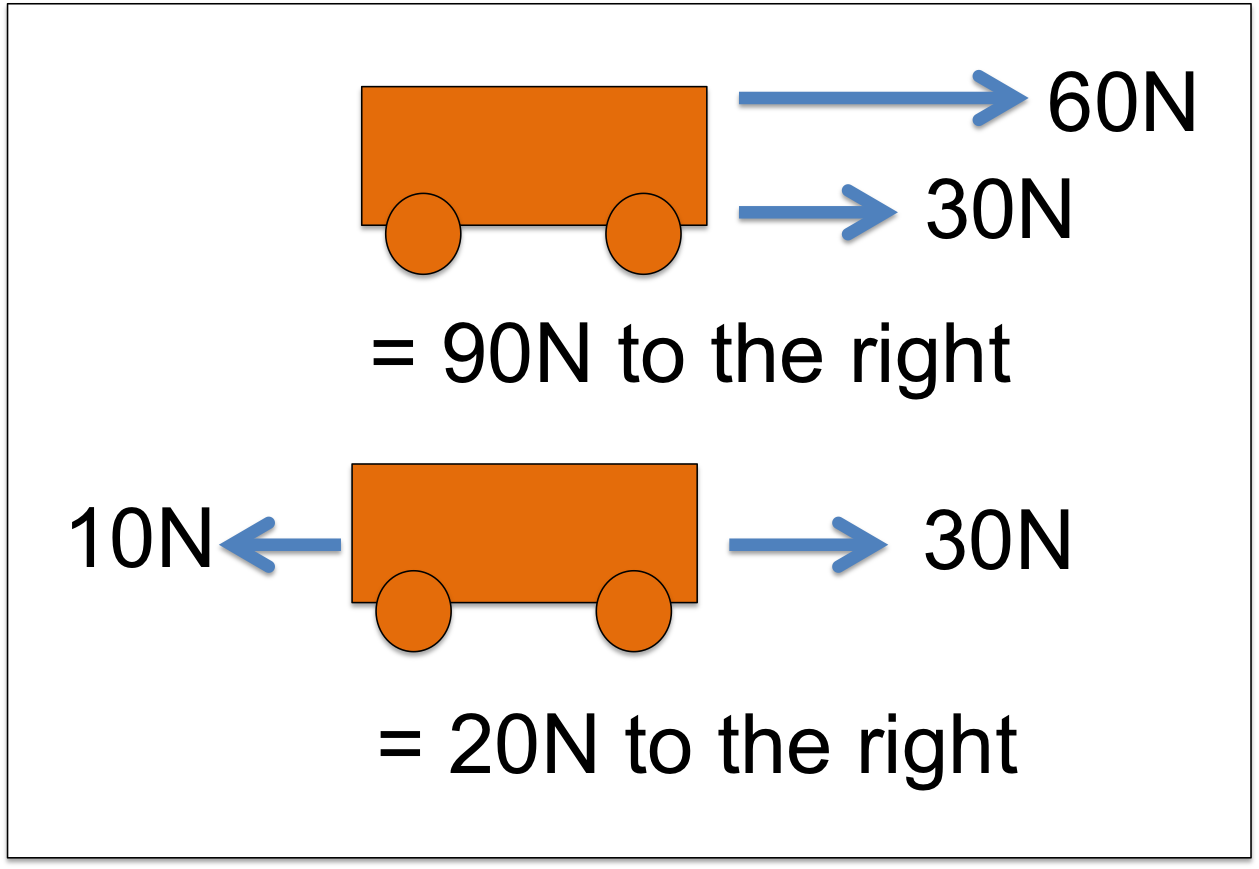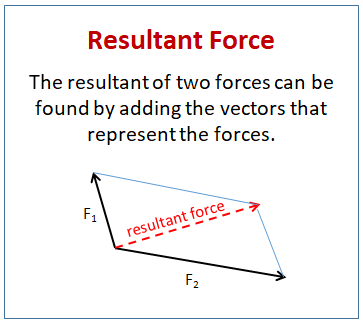Resultant Force And Unit
The forces are diagonals on each side of a rectangular parallelepiped. This traction is also a force per unit area and is a more general form of pressure.

Finding Resultant Force From 2 Forces At 0 To 90 Degree Physics And Mathematics 90 Degrees Physics
The equilibrant force is a force that is equal and opposite to the.

Resultant force and unit. The buoyancy force is the resultant of all these distributed forces acting on the body. Whereas Resultant means Net or total. It is the result of adding two or more vectors together.
The resultant force is the single force that would produce the same effect on an object the rope as two or more forces that are applied to the object. In this video we look at how to find the magnitude and angle of the resultant force. The resultant force is zero.
Recall the buoyancy force is equal to the weight of the water displaced. The English standard units are pound-force lb-f. The resultant force refers to the single force acting on an object along with their directions.
The resultant force is the vector sum. The unit for force is Newtons N. Units of Resultant Force The SI standard units for resultant forces are newtons N.
There is no change because Resultant means total or Net mathematically Addition or vector addition of all forces. The resultant will be zero when an object is subjected to have several numbers of forces acting in the same directions. Decompose each vector to x and y components.
And yes this is the guy who discovered gravity by observing a falling apple. The resultant is the diagonal. Which indicates that the resultant force R has the same direction as a and has magnitude equal to the product m a.
The resultant force is the imaginary force produced by the sum of two f. Going through an exam question about resultant forces and scalarvectors. For example lets say you and your friend pushing a table on the floor.
In physics and engineering a resultant force is the single force and associated torque obtained by combining a system of forces and torques acting on a rigid body via vector addition. That is divide each component by the magnitude of the resultant vector. Often however we know the forces that act on an object and we need.
Resultant of Forces Review on vector addition Vector addition Triangle method head- to-tail method Note. The unit resultant force curve is calculated under the condition of tangent level track namely icon 0. The resultant is the vector sum of two or more vectors.
Force is a vector meaning it has both magnitude and direction. If the weight of the box acting downwards is 50 N and the air resistance acting upwards is 20 N the forces are unbalanced. Given the forces F1 612 N F2 432 N F3 184 N and their angles 16 22 36 calculate the force resultant R and its angles R R R with the x y and z axis.
If displacement vectors A B and C are added together the result will be vector R. If there are grades including equivalent curve grades or equivalent tunnel grades it is necessary to deducted the converted additional resistances from the unit resultant force namely c f V 10 icon. And during addition unit will not change because vect.
The resultant force is the imaginary. The defining feature of a resultant force or resultant force-torque is that it has the same effect on the rigid body as the original system of forces. As shown in the diagram vector R can be determined by the use of an accurately drawn scaled vector addition diagram.
The unit of resultant force is the same as the unit of force ie Newton N. The tail of the first vector and the head of the last vector become the tail and head of the resultant principle of the force polygontriangle Parallelogram method Note. Add em all up.
An object falling through the air. When the forces act perpendicular we use pythagorean theorem to find the resultant force. To say that vector R is the resultant displacement of displacement vectors A.
For example if a box of 15 kg is subject to 5 forces which make it accelerate 20 ms 2 north-west then the resultant force is directed north-west and has the magnitude equal to 15 kg 20 ms 2 30 N. Resultant force To obtain the resultant force acting on a submerged surface. Here 50 is the magnitude and kg is the unit.
A unit vector has magnitude 1 so you will need to normalize your result. The magnitude of the resultant force is 36 units. Therefore it can be split or resolved into its rectangular components in the x- and y- directions using the sine and cosine functions.
The definition of the resultant force is the reduction of a system of forces acting on a body to a single force and torque.
What Is The Resultant Force And How To Find It With Examples Phyley

Resultant Force Definition Formula Video Lesson Transcript Study Com

Module 4 Net Force And Vector Addition Per Wiki

Determine The Magnitude And Direction Of The Resultant Force Youtube
Resultant As Magnitude And Direction Ck 12 Foundation

Resultant Force Simple English Wikipedia The Free Encyclopedia

Calculating Resultant Forces Vector Diagrams Graphs Work Done Calculations Equilibrium Parallelogram Of Forces Tension Vector Forces Gcse 9 1 Physics Igcse Revision Notes

How To Find Resultant Force Two Forces Mechanics Examsolutions Youtube
Https Www Rpi Edu Dept Core Eng Www Iea F15 Lectures Lecture2 Pdf
Resultant As Magnitude And Direction Ck 12 Foundation
Module 4 Net Force And Vector Addition Per Wiki

Magnitude And Angle Of The Resultant Force Kristakingmath Youtube

Resultant Force Definition Formula Video Lesson Transcript Study Com

Two Forces 3n And 4n Are Acting Perpendicular To Each Other What Is The Magnitude Of The Resultant Force And How Quora

The Resultant Of Two Forces Solutions Examples Videos Worksheets Games Activities

Question Video Finding The Resultant Moment Vector Of Two Forces About The Origin In Three Dimensions Nagwa




Post a Comment for "Resultant Force And Unit"